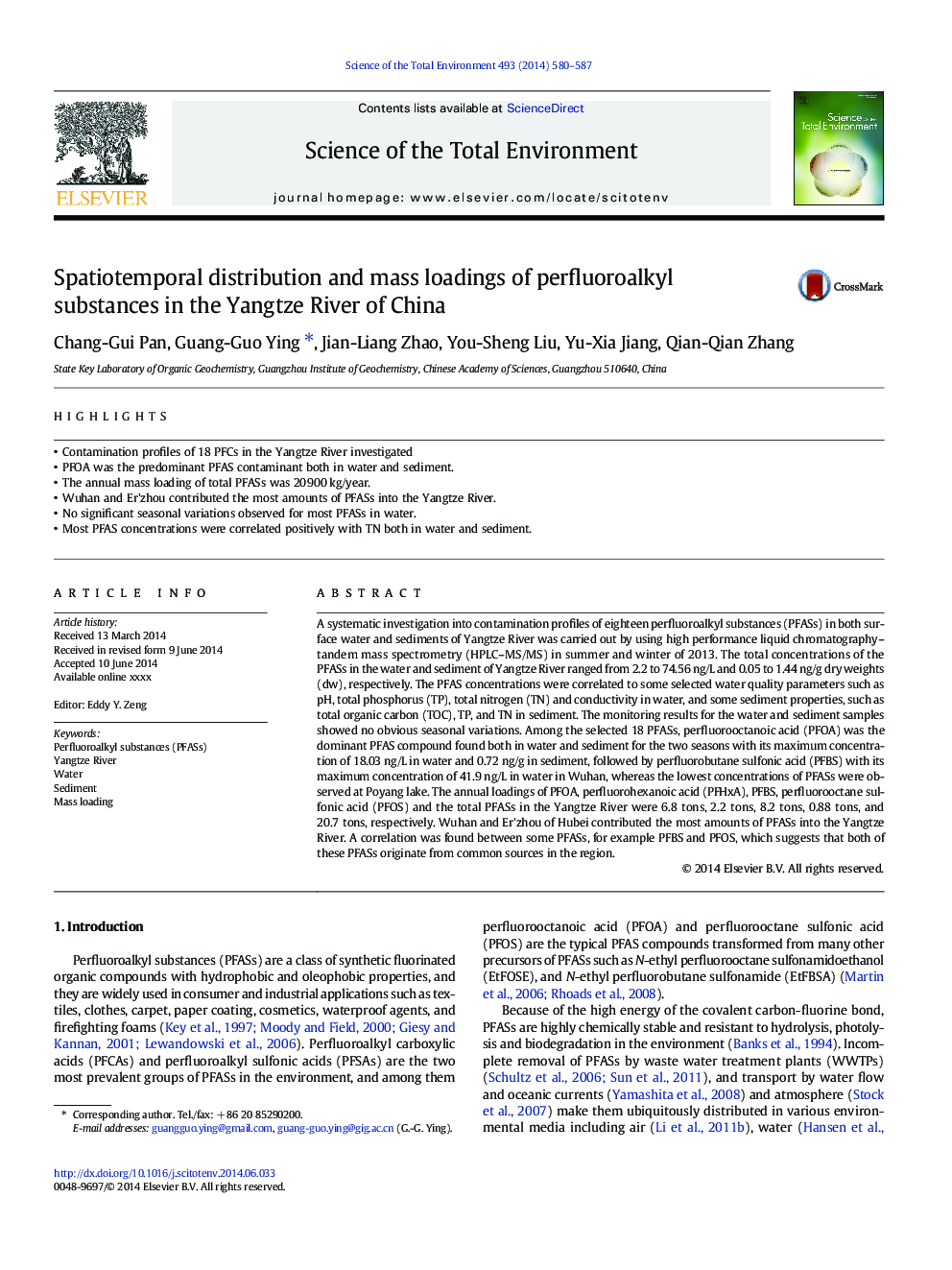| کد مقاله | کد نشریه | سال انتشار | مقاله انگلیسی | نسخه تمام متن |
|---|---|---|---|---|
| 6329760 | 1619778 | 2014 | 8 صفحه PDF | دانلود رایگان |
عنوان انگلیسی مقاله ISI
Spatiotemporal distribution and mass loadings of perfluoroalkyl substances in the Yangtze River of China
دانلود مقاله + سفارش ترجمه
دانلود مقاله ISI انگلیسی
رایگان برای ایرانیان
کلمات کلیدی
موضوعات مرتبط
علوم زیستی و بیوفناوری
علوم محیط زیست
شیمی زیست محیطی
پیش نمایش صفحه اول مقاله

چکیده انگلیسی
A systematic investigation into contamination profiles of eighteen perfluoroalkyl substances (PFASs) in both surface water and sediments of Yangtze River was carried out by using high performance liquid chromatography-tandem mass spectrometry (HPLC-MS/MS) in summer and winter of 2013. The total concentrations of the PFASs in the water and sediment of Yangtze River ranged from 2.2 to 74.56Â ng/L and 0.05 to 1.44Â ng/g dry weights (dw), respectively. The PFAS concentrations were correlated to some selected water quality parameters such as pH, total phosphorus (TP), total nitrogen (TN) and conductivity in water, and some sediment properties, such as total organic carbon (TOC), TP, and TN in sediment. The monitoring results for the water and sediment samples showed no obvious seasonal variations. Among the selected 18 PFASs, perfluorooctanoic acid (PFOA) was the dominant PFAS compound found both in water and sediment for the two seasons with its maximum concentration of 18.03Â ng/L in water and 0.72Â ng/g in sediment, followed by perfluorobutane sulfonic acid (PFBS) with its maximum concentration of 41.9Â ng/L in water in Wuhan, whereas the lowest concentrations of PFASs were observed at Poyang lake. The annual loadings of PFOA, perfluorohexanoic acid (PFHxA), PFBS, perfluorooctane sulfonic acid (PFOS) and the total PFASs in the Yangtze River were 6.8Â tons, 2.2Â tons, 8.2Â tons, 0.88Â tons, and 20.7Â tons, respectively. Wuhan and Er'zhou of Hubei contributed the most amounts of PFASs into the Yangtze River. A correlation was found between some PFASs, for example PFBS and PFOS, which suggests that both of these PFASs originate from common sources in the region.
ناشر
Database: Elsevier - ScienceDirect (ساینس دایرکت)
Journal: Science of The Total Environment - Volume 493, 15 September 2014, Pages 580-587
Journal: Science of The Total Environment - Volume 493, 15 September 2014, Pages 580-587
نویسندگان
Chang-Gui Pan, Guang-Guo Ying, Jian-Liang Zhao, You-Sheng Liu, Yu-Xia Jiang, Qian-Qian Zhang,